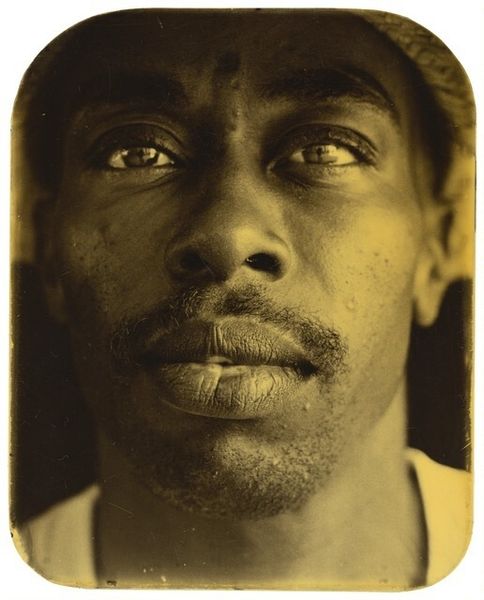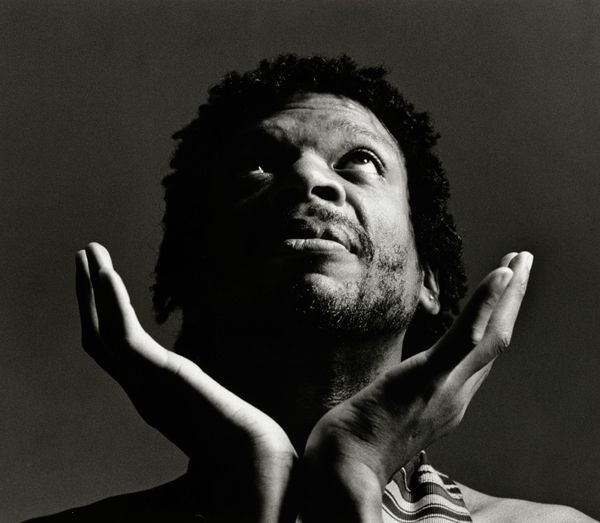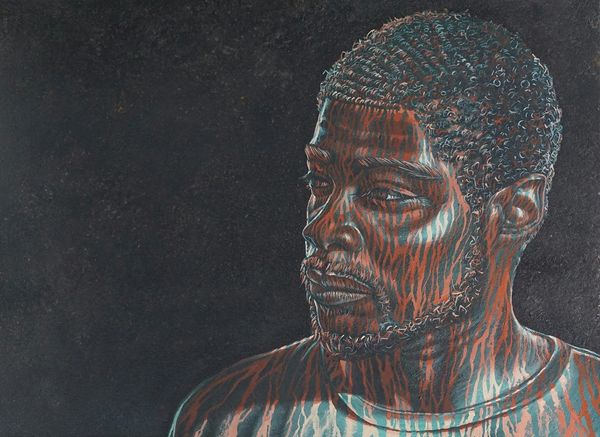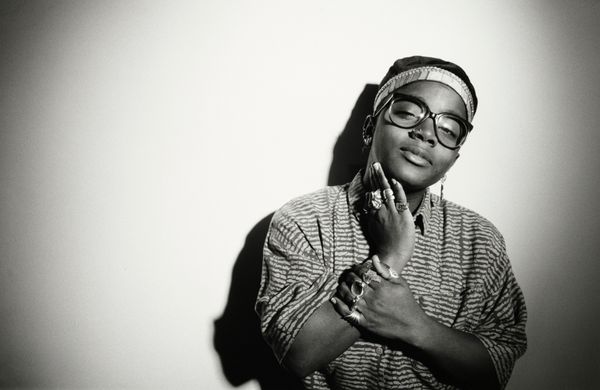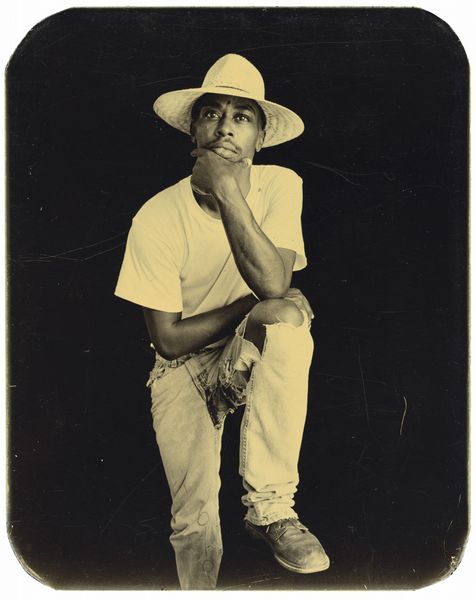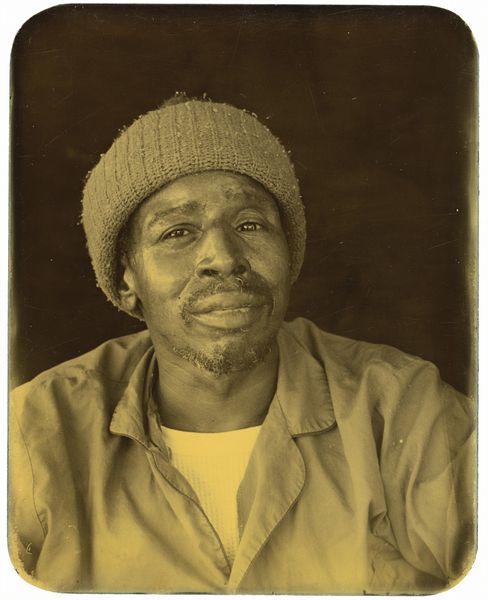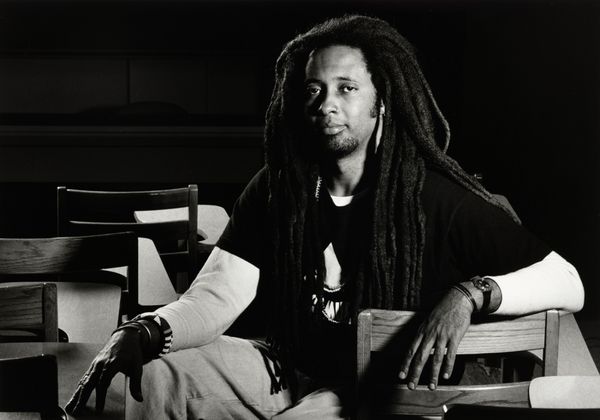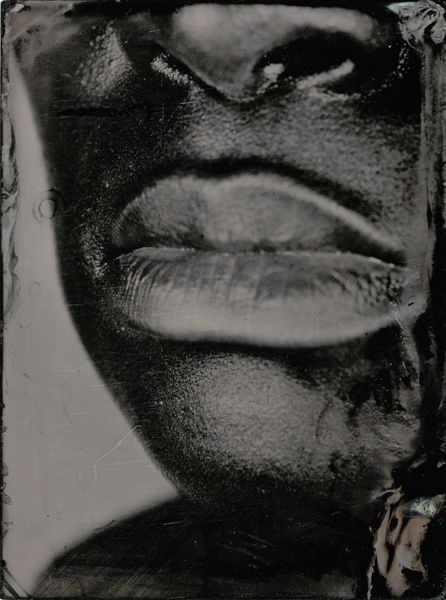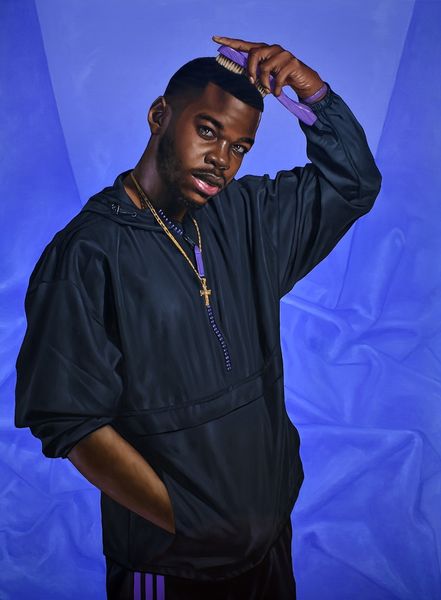
photography
#
portrait
#
portrait
#
photography
#
black and white
#
chiaroscuro
#
realism
Dimensions: image: 37.2 × 55.6 cm (14 5/8 × 21 7/8 in.) sheet: 50.2 × 60.7 cm (19 3/4 × 23 7/8 in.)
Copyright: National Gallery of Art: CC0 1.0
Curator: Here we have Nancy Andrews' striking portrait, "Charles Gervin," taken in 1993. The photographic print is presented in black and white, deploying a high contrast chiaroscuro. Editor: My first thought is "intense." The high contrast gives it such dramatic weight, almost biblical in its use of light and shadow. There is an aura of contemplation about him. Curator: Absolutely. What interests me is the tension Andrews creates through her careful use of materials and production techniques. This isn’t just a snapshot; it's a constructed image. The high contrast we see is a result of very deliberate printing choices in the darkroom. The photographer seems aware that photographs carry an implication of realism. Editor: The placement of the eyeglasses on the subject's head speaks to cultural symbolism. They seem like a halo, an allusion to intelligence or vision – literally and figuratively. Do you feel that the angle of the head in the image could also contribute to this cultural interpretation? Curator: It does. Consider Andrews' awareness of fashion trends and social context. Was Gervin’s image originally produced to address themes and messages about the status of African Americans in contemporary American culture? And what kind of cultural performance is reflected by that look toward the light? How is this photo an expression of modern American labor? I want to push the boundaries. Editor: I think those points add to the depth of our encounter with the image, certainly. Looking closer, I see that only a portion of the glasses are truly in focus while most other edges in the composition show a greater depth of field. It draws my eye to the very top, allowing one to think, perhaps of great visions beyond us, in both individual and cultural contexts. Curator: It’s an invitation for further study for the observer, who becomes both consumer and worker. We've begun to excavate many facets of this very deep portrait! Editor: Indeed. Thank you for lending me your critical eye today!
Comments
No comments
Be the first to comment and join the conversation on the ultimate creative platform.


